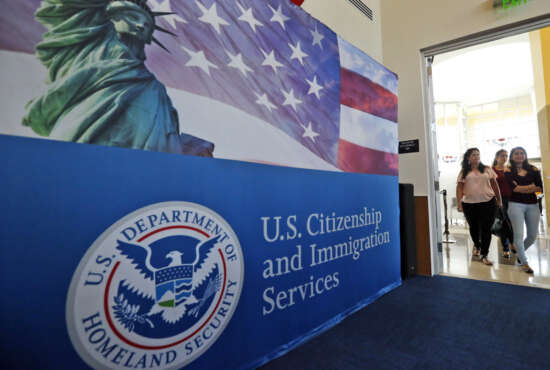USCIS workforce bounces back, but agency faces murky funding future
The workforce at USCIS has reached record levels, but the agency continues to face an uncertain funding picture with its reliance on fees.
U.S. Citizenship and Immigration Services has built up its workforce and improved employee morale after facing major financial challenges four years ago.
But USCIS’ director says the agency’s ability to “fully” address its workload is contingent on receiving annual appropriations, in addition to its fee-based funding.
USCIS Director Ur Jaddou, testifying before the House Judiciary Committee last week, reported the agency now has 22,500 employees, the most in its history.
That comes a little more than four years after dire financial straits nearly forced USCIS to furlough many employees. The agency did institute a hiring freeze, and its headcount at one point dipped below 19,000 staff.
“Innovative hiring strategies have been at the center of our growth,” Jaddou testified last week. “We created additional entry-level positions for mission-critical roles, allowing USCIS to recruit talented individuals earlier in their careers, with a goal of training and providing long-term development opportunities to ensure they continue to build their futures with USCIS.”
The 22,500 employees is still about 2,000 short of USCIS’s authorized personnel total, as reported by the agency’s ombudsman earlier this year.
USCIS’s hiring freeze ended in 2021, but the agency has been grappling with the lingering effects, including staff attrition and funding shortfalls.
But in addition to new hiring strategies and aggressive recruiting, USCIS has also sought to improve communications between employees and management through townhalls and other virtual engagements.
Jaddou said those efforts are paying off, as USCIS’s 2024 Federal Employee Viewpoint Survey results show an “all time high” 79% positivity rate on the employee engagement index.
“What is even more encouraging is that our 2024 results show improvement across all core areas, from leadership and supervision to performance, recognition, and accountability,” she added.
USCIS funding outlook
About 96% of USCIS’s funding comes from the fees it generates through immigration benefits processing. The funding structure helped contribute to the agency’s 2020 financial crisis, when applications for work authorizations and other immigration benefits plunged due to the pandemic.
And the USCIS ombudsman and the Department of Homeland Security inspector general have found the fee-funded structure has also hindered USCIS’s ability to expand humanitarian programs in recent years, leading to a backlog of asylum cases at the southern border, for example.
The agency introduced a new fee rule that took effect on April 1. Jaddou said the new rule factors in “current and projected workloads and will allow us to strengthen our workforce, and develop and implement innovative solutions that improve efficiency, integrity, and customer experience.”
Among other changes, the rule charges employers a $600 “Asylum Program Fee.”
But Jaddou implored Congress to continue adding annual appropriations to USCIS’s budget. The agency received $68.7 million in the Fiscal 2024 DHS Appropriations Act to help deal with backlog reduction.
“While the new fee rule will generate much needed funding to keep pace with incoming workloads, I want to emphasize that continued congressional funding is the only way we will be able to fully and meaningfully address the full scope of the work of our statutory mission to administer the nation’s lawful immigration system,” Jaddou testified.
The Biden administration, as part of its fiscal 2025 budget request, had sought $265 million in discretionary funds for USCIS. That would include $145 million to help administer refugee programs.
But the House Appropriation Committee’s fiscal 2025 homeland security appropriations measure included just $112 million in discretionary funding for USCIS to administer its employer verification system.
The final funding picture for fiscal 2025 remains unclear. But Congress is likely to pass a continuing resolution before the current CR expires on Dec. 20 to give the incoming Trump administration, as well as the Republican majorities in both the House and Senate, a chance to work out a funding deal.
President-elect Donald Trump has yet to announce a nominee for USCIS director.
In what will likely be her final testimony as USCIS director, Jaddou said reducing USCIS’s reliance on fees is one of the long-term reforms she’d recommend for the agency.
“The work that we do at the border alongside our partners at Customs and Border Protection, the work we do on the refugee program, these are all unfunded, and we are constrained on how much we can do, and therefore we have to rob Peter to pay Paul to be able to meet not only our mission, but really our statutory mandate,” Jaddou said. “And that cannot be done unless we are appropriated by Congress.”
Copyright © 2025 Federal News Network. All rights reserved. This website is not intended for users located within the European Economic Area.
Follow @jdoubledayWFED




